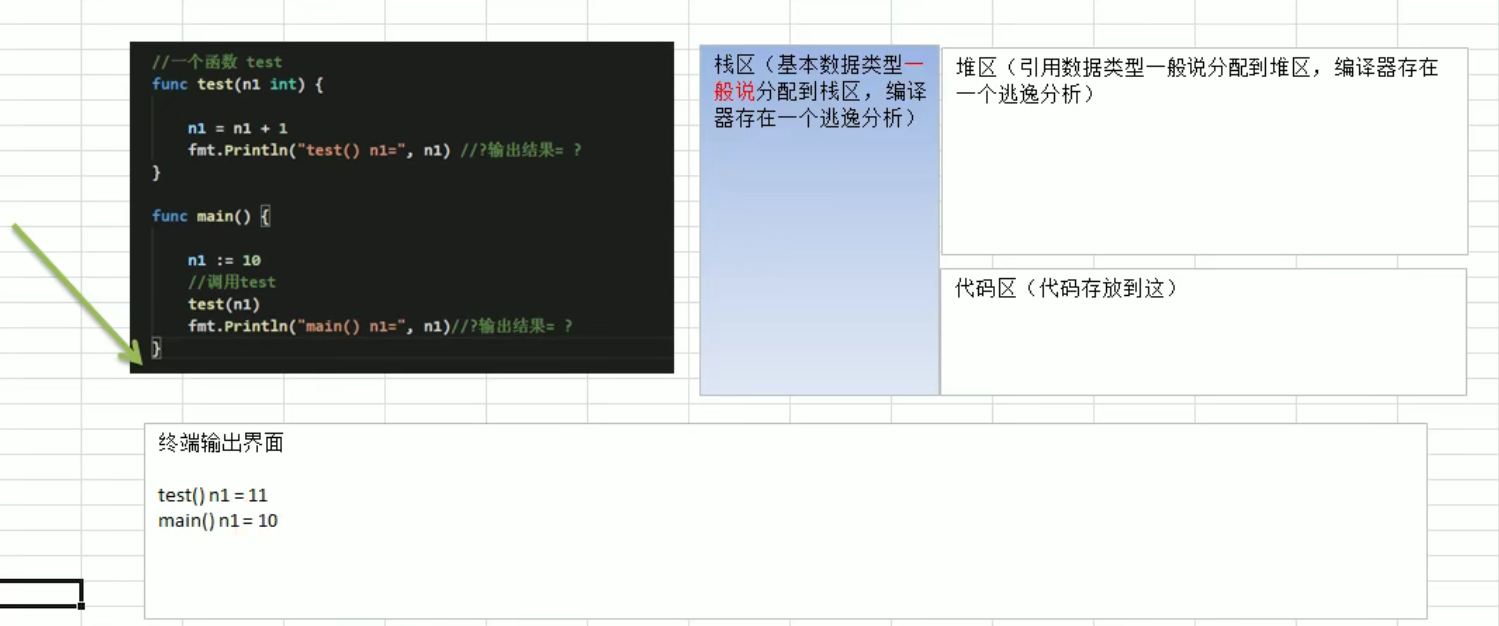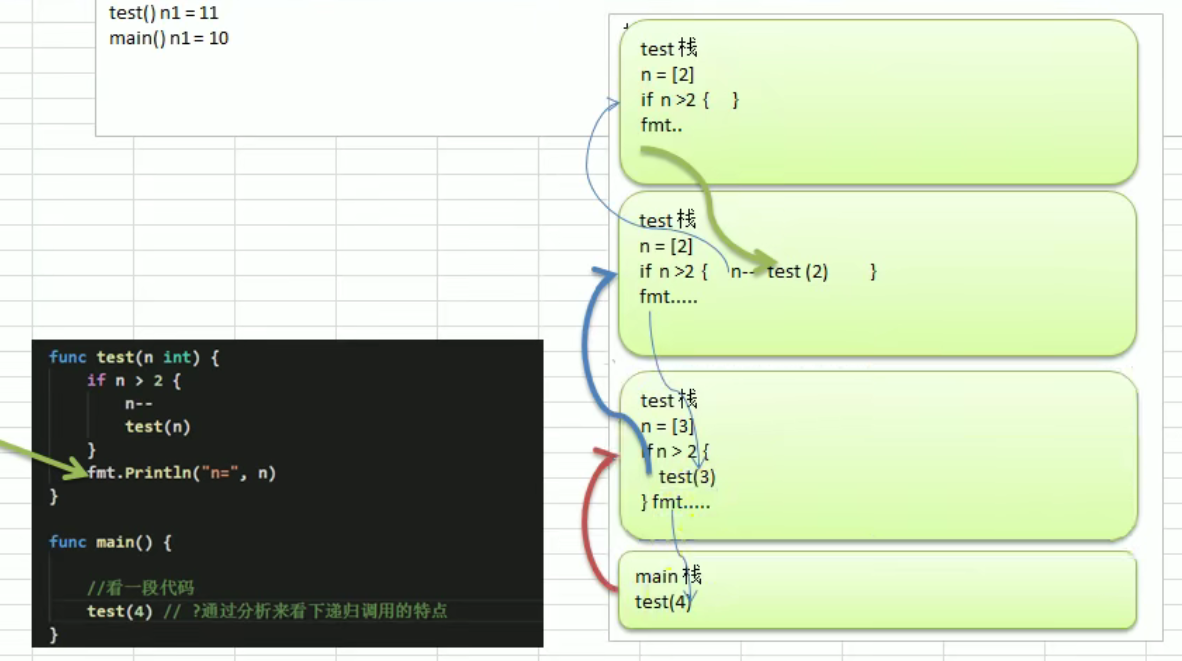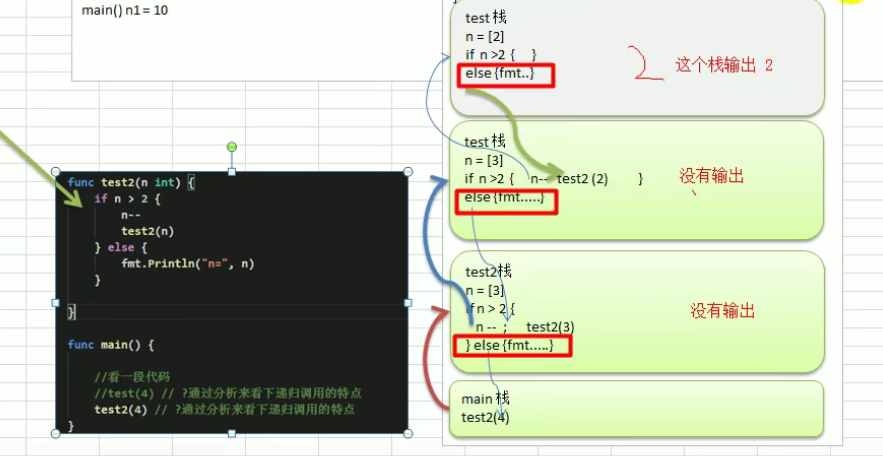package mainimport "fmt"func test(n1 int) {n1++fmt.Println("test() n1=", n1)}func main() {n1 := 10test(n1)fmt.Println("main() n1=", n1)}// test() n1= 11// main() n1= 10

- 在调用函数的时候,会为该函数分配一个新的内存空间(栈),和原有的空间区分开
- 每个函数对应的栈中,数据空间时独立的,不会混淆
- 当一个函数执行完毕后,程序会回收该函数对应的内存空间
return返回值
定义返回值类型列表
func sum(n1 int, n2 int) (int, int) {return n1 + n2, n1 - n2 // 返回给调用者}func main() {total, reduce := sum(10, 20)fmt.Printf("total %T %v \n", total, total)fmt.Printf("reduce %T %v \n", reduce, reduce)}// total int 30// reduce int -10
函数的递归调用
在函数体内,调用本身
阶层实现
func test(n int) {if n > 2 {n--test(n)}fmt.Println("n = ", n)}func main() {test(4)}n = 2n = 2n = 3
上面递归变形
func test2(n int) {if n > 2 {n--test2(n)} else {fmt.Println("n = ", n)}}func main() {// test(4)test2(4)}// n = 2
注意点
1、执行一个函数时,就创建一个新的受保护的独立空间(新函数栈)
2、函数的局部变量是独立的,不会相互影响
3、递归必须向退出递归的条件逼近,否则就无线递归了
4、当一个函数执行完毕,或者遇到return,就会返回,遵守谁调用,就将结果返回给谁。同时该函数被销毁。
斐波那契数
1 ,1 ,2 ,3 ,5 ,8, 13 ,21 ,……
f(n) = f(n-2) + f(n-1)
func fbn(n int) int {if n == 1 || n == 2 {return 1} else {return fbn(n-2) + fbn(n-1)}}func main() {// 斐波那契数列// 1 ,1 ,2 ,3 ,5 ,8, 13 ,21 ,......// f(n) = f(n-2) + f(n-1)fmt.Println("value=", fbn(5)) // 第5个斐波那契数fmt.Println("value=", fbn(6)) // 第6个斐波那契数fmt.Println("value=", fbn(7))fmt.Println("value=", fbn(8))}value= 5value= 8value= 13value= 21
猴子吃桃问题
// 猴子吃桃子// 每一天吃当天桃子数量的一半多1个,第十天的时候发现只剩下一个// 求第一天的桃子数量func peach(n int) int {if n > 10 || n < 1 {fmt.Println("您输入的天数不对")return 0}if n == 10 {return 1} else {return (peach(n+1) + 1) * 2}}fmt.Println("第1天的桃子数量", peach(1))// 第1天的桃子数量 1534



